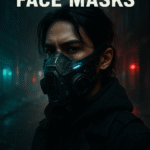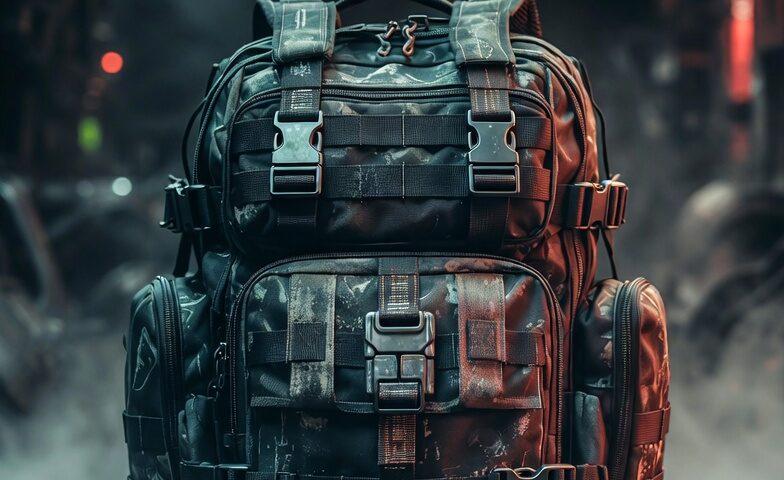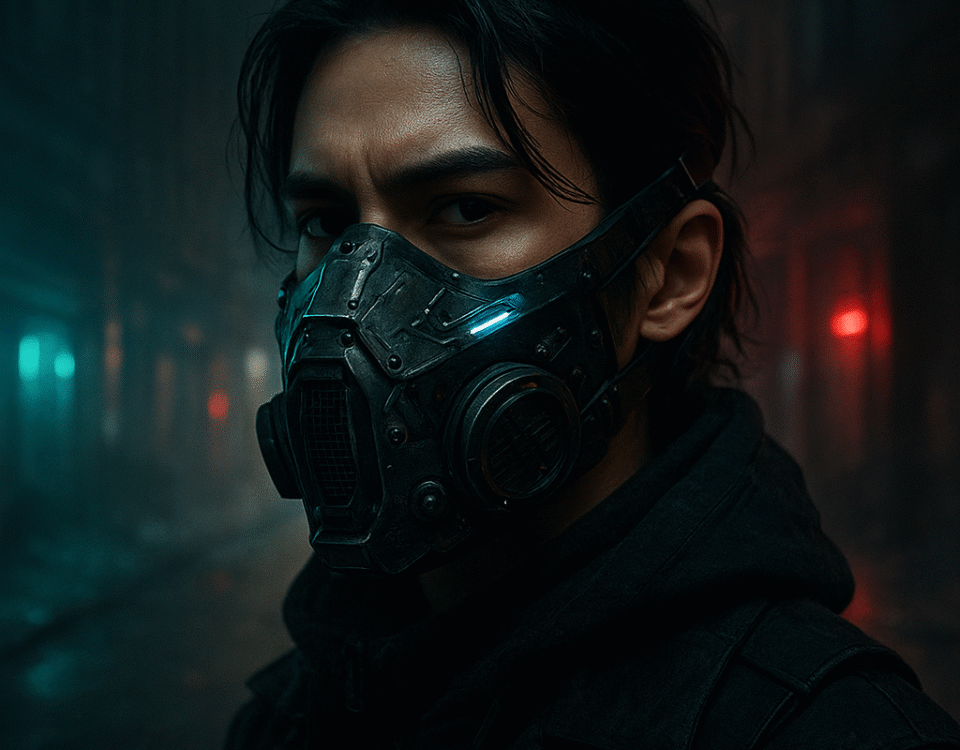
Dystopian Rings and Jewelry: A Style Guide
November 15, 2025
Dystopian Face Masks: Art, Tech, and Reality
November 16, 2025In a world increasingly shaped by rapid technological change and environmental uncertainty, the gear we choose says a lot about our readiness for the future. Beyond simple storage, a new category of carry-alls is emerging from the realms of fiction and functional design: dystopian backpacks. These are not just bags; they are survival systems, personal tech hubs, and statements of self-sufficiency. They blend rugged utility with futuristic aesthetics, preparing the modern individual for anything from an urban power outage to a cross-country trek.
This article explores the rising trend of dystopian backpacks. We will dive into their design philosophy, examine their key features, and understand why they resonate so strongly in our current cultural landscape. Whether you are a fan of speculative fiction, a prepper, a tech enthusiast, or simply someone who values robust and versatile gear, the world of dystopian backpacks offers a compelling glimpse into the future of personal carry.
What Defines a Dystopian Backpack?
At its core, a dystopian backpack is built for resilience in challenging environments, both real and imagined. Unlike a standard school bag or hiking pack, its design anticipates a breakdown of normal infrastructure. Functionality is paramount, but it is a specific kind of functionality—one that prioritizes survival, adaptability, and protection.
The concept draws heavily from popular culture, particularly science fiction films, video games, and novels set in post-apocalyptic or cyberpunk worlds. Think of the gear carried by characters in Blade Runner, The Last of Us, or Mad Max. Their backpacks are extensions of their will to survive, equipped to handle scarcity, danger, and the unknown. This aesthetic and practical philosophy is what separates dystopian backpacks from other tactical or outdoor gear. They are designed not just for a weekend in the woods, but for a life where the woods might be your permanent new reality.
Key Features of Dystopian Backpacks
The defining characteristics of these futuristic packs focus on durability, modularity, and technological integration. They are engineered to be the ultimate companion when facing unpredictable circumstances.
Uncompromising Durability and Material Science
The foundation of any good dystopian backpack is its construction. Manufacturers use advanced, heavy-duty materials designed to withstand extreme wear and tear.
- High-Denier Fabrics: Materials like 1000D Cordura or high-grade ballistic nylon are common. These fabrics are exceptionally resistant to abrasions, punctures, and rips, ensuring the pack’s integrity in harsh urban or wilderness settings.
- Weatherproofing: To protect sensitive contents from the elements, these packs often feature water-resistant coatings, taped seams, and polyurethane-lined interiors. Some advanced models are fully submersible, offering complete protection against water damage.
- Reinforced Hardware: Zippers, buckles, and straps are critical failure points. Dystopian designs utilize oversized YKK zippers, military-grade polymer or metal buckles (like Cobra buckles), and reinforced stitching at all stress points to prevent breakage under load.
Advanced Modularity and Customization
A one-size-fits-all approach does not work when survival is on the line. Dystopian backpacks are designed to be highly modular, allowing the user to adapt the pack to specific missions or changing needs.
- MOLLE/PALS Webbing: The most common system for modularity is the MOLLE (Modular Lightweight Load-carrying Equipment) grid. This series of nylon webbing allows for the attachment of countless compatible pouches, holsters, and accessories. You can add a medical kit, a water bottle holder, or extra ammo pouches as needed.
- Internal Organization: Inside, these packs feature configurable compartments. Velcro-lined panels allow for the placement of hook-and-loop pouches, while removable dividers help organize electronics, tools, and supplies. This prevents your gear from becoming a jumbled mess.
- Scalable Design: Many packs are designed to be scalable. They might feature compression straps to shrink the profile when carrying less, or attachment points for larger, secondary bags to expand capacity for longer journeys.
Tech Integration and Power Management
In a future, whether utopian or dystopian, technology remains crucial. These backpacks are built to house and power the modern survivor’s essential electronics.
- Dedicated Tech Compartments: Padded and often reinforced sleeves protect laptops, tablets, and communication devices from impact. These compartments are typically suspended within the pack to prevent damage if the bag is dropped.
- On-the-Go Charging: Many dystopian backpacks include integrated USB pass-through ports. These allow you to connect a power bank stored safely inside the pack to a device on the outside, letting you charge your phone or GPS unit while on the move.
- EMP and RFID Protection: For the truly prepared, some high-end models offer compartments lined with Faraday cage material. This protects sensitive electronics from an electromagnetic pulse (EMP) event and blocks RFID signals to prevent digital theft of personal information from passports or credit cards.
The Cultural Significance of Dystopian Gear
The growing interest in dystopian backpacks is more than just a niche hobby; it reflects broader societal anxieties and aspirations. These packs tap into a deep-seated human desire for control and preparedness in an increasingly complex world.
Owning a piece of gear that is over-engineered for daily life provides a sense of security. It’s a tangible way of feeling ready for potential disruptions, from natural disasters to civil unrest. This mindset, often associated with the prepper community, has become more mainstream as global events highlight the fragility of our systems.
Furthermore, the aesthetic of dystopian backpacks has a powerful appeal. It combines the ruggedness of military gear with the sleek, often minimalist lines of futuristic design. This “techwear” or “warcore” style has found a strong following in fashion and subcultures that value both form and extreme function. Carrying one of these packs is a statement that you value resilience, independence, and forward-thinking design.
Finding the Right Dystopian Backpack for You
Choosing the right pack depends entirely on your perceived needs and intended use. Are you an urban commuter who wants extra protection and organization for your tech? Or are you planning a comprehensive bug-out bag for emergency situations?
- For the Urban Survivor: Look for a sleek, lower-profile pack (around 20-30 liters) with excellent tech organization and weatherproofing. Features like RFID-blocking pockets and discreet, minimalist aesthetics are beneficial for navigating city environments. Modularity might be less critical than easy-access compartments for daily essentials.
- For the All-Around Prepper: A larger, more modular pack (35-55 liters) is a better choice. Prioritize a robust MOLLE system, a comfortable and adjustable harness to carry heavy loads, and ample space for food, water filtration, first aid, and shelter systems. Durability and repairability in the field are key considerations.
- For the Techwear Enthusiast: This user values aesthetics as much as function. Look for packs from brands known for their cutting-edge materials and unique designs. Features like magnetic buckles, unconventional fabrics like X-Pac, and a highly stylized, futuristic look are often prioritized.
Final Words
Dystopian backpacks are a fascinating intersection of practical design, futuristic speculation, and cultural expression. They are more than just containers for our belongings; they are tools designed to empower us in the face of the unknown. By combining military-grade durability, endless modularity, and smart tech integration, these packs offer a level of preparedness that goes far beyond the everyday carry.
Whether you see them as a practical tool for emergency readiness, a style statement, or a bit of both, the rise of the dystopian backpack signals a collective shift in how we think about personal gear. They represent a proactive approach to self-reliance, encouraging us to be prepared, adaptable, and resilient—qualities that are valuable no matter what the future holds.
Frequently Asked Questions (FAQs)
Q1: Are dystopian backpacks just another name for tactical or military backpacks?
A: While there is significant overlap, dystopian backpacks often have a stronger emphasis on futuristic aesthetics and integrated technology. They may include features like EMP protection, built-in charging systems, and materials from the high-fashion techwear scene, which are less common in traditional military-issue packs.
Q2: Are these backpacks practical for everyday use?
A: Absolutely. Many people use smaller dystopian-style backpacks as their daily carry bags. The extreme durability, excellent organization, and weatherproofing make them ideal for protecting laptops, tablets, and other essentials during a daily commute. Their overbuilt nature means they will likely outlast conventional backpacks by many years.
Q3: Is the MOLLE webbing necessary if I don’t plan on adding pouches?
A: Not necessarily, but it provides future-proofing. Even if you don’t use it initially, the MOLLE grid offers the flexibility to adapt your pack later. You might decide you need an external water bottle holder for a hike or a first-aid pouch for your car kit. It’s better to have the option and not need it than to need it and not have it.
Q4: Can a dystopian backpack really protect electronics from an EMP?
A: Packs with properly designed Faraday cage compartments can offer significant protection against EMPs and solar flares. These compartments are lined with conductive materials that block external electromagnetic fields. However, the effectiveness can vary by manufacturer, so it’s important to choose a reputable brand if this is a critical feature for you.
Q5: Are dystopian backpacks comfortable to carry?
A: High-quality models are designed for comfort, even under heavy loads. They typically feature padded shoulder straps, an adjustable sternum strap, a supportive back panel with airflow channels, and often a padded waist belt to distribute weight to the hips. Comfort is a key part of their design, as they are intended for potentially long-term use.



